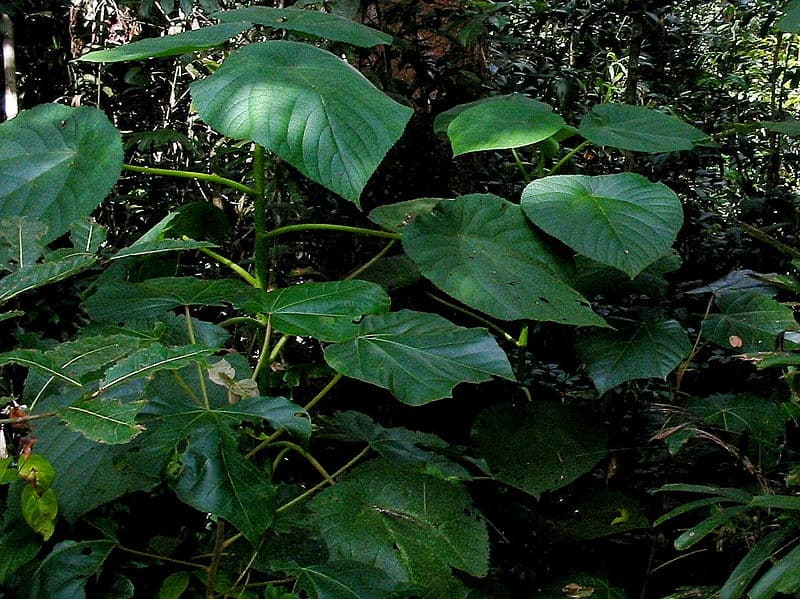
Gympie-Gympie Facts
- This intriguing product of Nature and evolution most frequently goes by the distinctive common name of Gympie-Gympie in its native range. Yet, it does have other general titles. These include the terms stinging tree, stinging bush, or suicide tree.
- Within the scientific community, though, it’s perhaps better known by its technical designation. Unfortunately, like many such names, it’s difficult for the layperson to pronounce. That’s because it holds the formal epithet Dendrocnide moroides.
- The fascinating flora received that tag due to the efforts of the Singaporean botanist, Wee-Lek Chew. His, however, was a redesignation of the species. It received its original recognition as a separate species previously, and under another formal moniker.
- Pleasantly, the remarkable Gympie-Gympie appears to be maintaining a thriving population base. That fortunate state also seems to hold true throughout the entirety of its native range. The IUCN therefore does not presently list it on its Red List.
- Unfortunately, though, that uncommon status could potentially change in the foreseeable future. This occurs because of the fact that, like many species possessing a limited natural range, it now finds itself facing various threats to original populations.
- Like all forms of life on this planet, most of the perils it faces stem from the actions of mankind. These include such dangers as habitat degradation and, of course, climate change. Human expansion of its territory eases its situation somewhat, though.
Related Articles
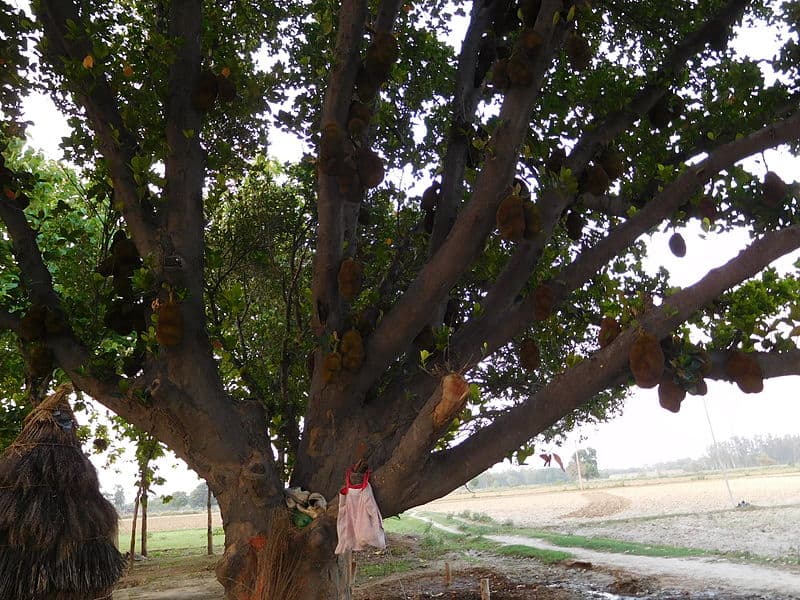


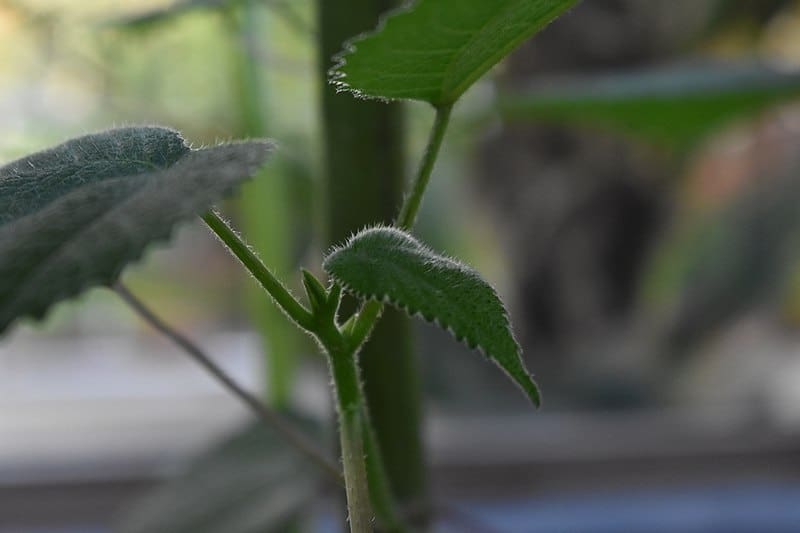
Gympie-Gympie Physical Description
Perhaps most notably, despite its size, the incredible Gympie-Gympie usually appears as a single-stemmed plant. Yet, the botanical marvel displays a surprising versatility. In fact, the remarkable plant sometimes develops as a small tree with a very thin trunk.
Impressively, individual specimens of the flora occasionally attain heights measuring as much as 10 ft (3 m). More commonly, however, individual examples measure about 3.3 ft (1 m) in height. The variations in size typically occur due to differences in local conditions.
The stems of the Angiosperm most commonly develop as comparatively thin, and flexible. These produce several heart-shaped leaves measuring from 5-9 in (12-22 cm) in length. Each also averages roughly 4-7 in (11-18 cm) wide, and have a dense covering of fine hairs.
Somewhat surprisingly, the flowers of the amazing Gympie-Gympie develop as relatively small in size. Following their blooming, these produce small, mulberry-like fruit. In terms of coloring, these tiny fruits typically present hues ranging from bright pink to purple.
- Kingdom: Plantae
- Phylum: Angiosperms
- Class: Eudicots
- Order: Rosales
- Family: Urticaceae
- Genus: Dendrocnide
- Species: D. moroides
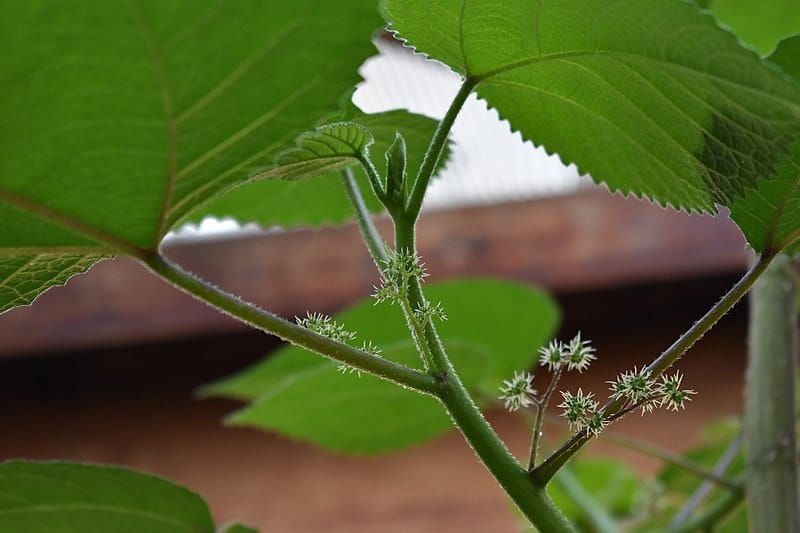
Gympie-Gympie Distribution, Habitat, and Ecology
The highly distinctively evolved Gympie-Gympie developed as native to a moderately small section of the surface of the earth. Given its numerous amazing qualities, though, the location of that zone of habitation likely won’t surprise many people who learn of it.
That’s true since this impressive plant orginated on the continent of Australia. Even with those greater confines, however, it only lived in a specific section of the landmass. All known original concentrations of the biological masterpiece appeared in the northeast areas.
Like many related species, it displays decidedly strong preferences regarding its choice of habitat. In its region of origin, this consists almost entirely of sections of dense rainforest. There, it makes its presence known either in or near the areas of greatest density.
With the expansion of mankind into its territory, though, it’s proven itself to be highly adaptible. It’s also shown itself to be quite opportunistic. Due to this, it frequently and rapidly moves into man-made clearings, and along watercourses and even roadsides.
Within the ecosystem Nature intended it for, the Gympie-Gympie plays an important role. That’s due to the fact that multiple insect species consume its leaves. At least one mammal also feeds on these, despite their toxic nature. Various birds also feed on its many berries.
This dangerous yet fascinating species also ranks as unique within its genus. That’s because the plant evolved an uncommon characteristic. It produces both male and female flowers. In its case, the males typically remain the minority, being surrounded by the females.
It also developed an extremely effective and powerful protection. That’s because contact with any of the countless tiny hairs covering its entirety releases a powerful toxin. Although not fatal, even minor contact frequently produces extreme pain in the unfortunate victim.
Species Sharing Its Range
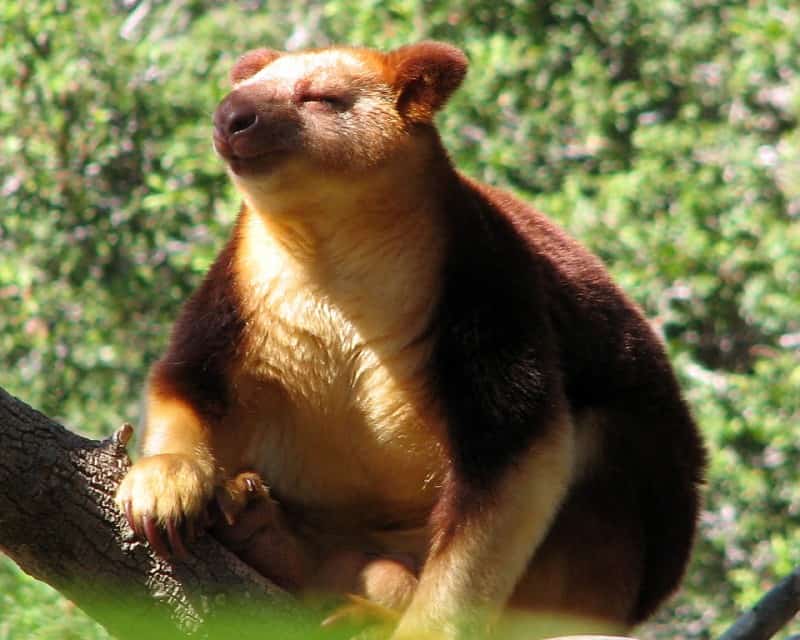
Tree Kangaroo
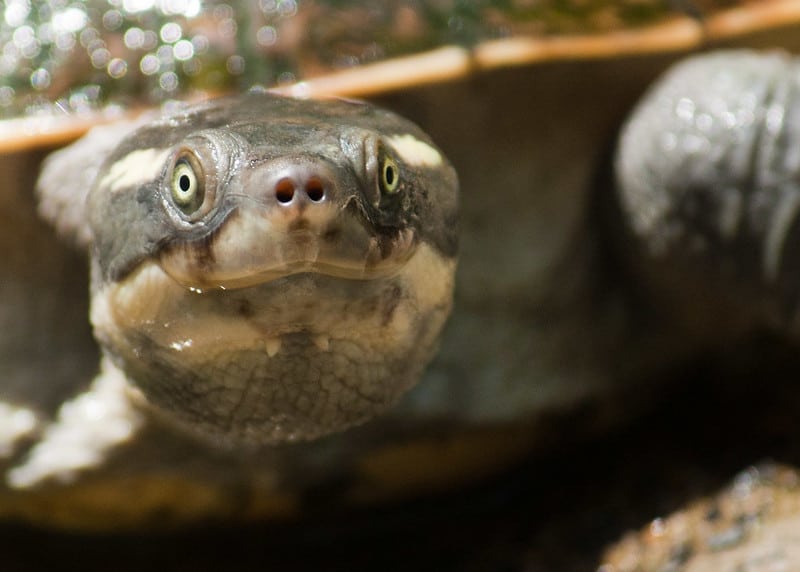
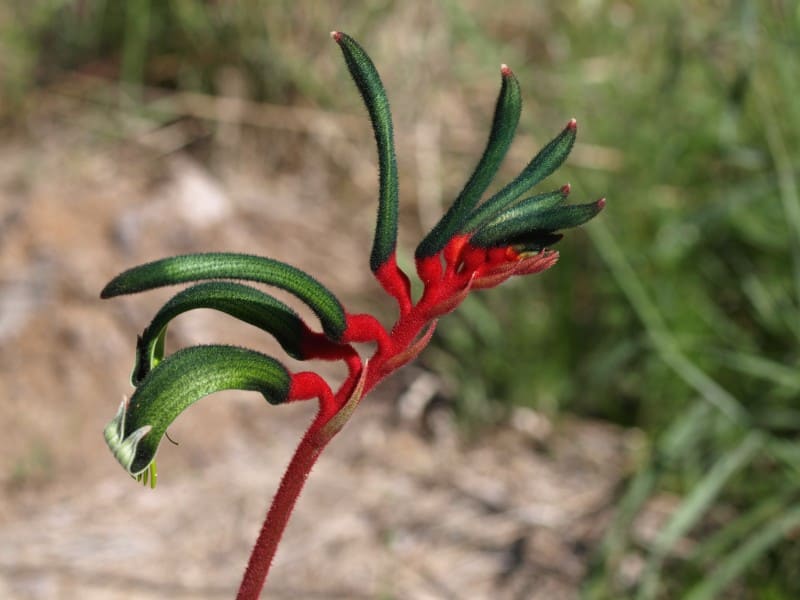
Check out our other articles on Native North American Mammals, Erta Ale, Colorado Columbine, Bald Uakari, Brown Pelican, Pacific Sea Nettle, Eastern Yellowjacket, Saltwater Crocodile









Leave a Reply